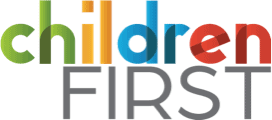TESTIMONY REGARDING VIRTUAL PREP ACADEMY OF PENNSYLVANIA’S CYBER CHARTER APPLICATION
Pennsylvania Department of Education
November 5 and 12, 2020
Tomea Sippio-Smith
K-12 Education Policy Director
Thank you for the opportunity to speak this morning. My name is Tomea Sippio-Smith. I am the K-12 Education Policy Director at Public Citizens for Children and Youth.
I’m here today to ask that you consider the following information as you review Virtual Prep Academy of Pennsylvania’s (VPAP) application. The Department should view this application cautiously as all 14 of Pennsylvania’s cyber charters scored below the statewide average in English and math assessments and all 14 have been identified as needing support under the states ESSA School Improvement and Accountability plan. Beyond this concerning track record, my testimony outlines three specific reasons why the submission and program outlined by the Virtual Prep Academy of Pennsylvania application is inconsistent with the criteria in Pennsylvania’s charter school law (24 P.S. § 17-1745-A(f)(1)).
1) VPAP’s external service provider, Accel Online Pennsylvania, may lack the capability to provide comprehensive learning experiences. The 26-page draft services agreement between VPAP and Accel delineates Accel’s extensive role. This includes providing curriculum, selecting textbooks, technology services, internal reporting, budgeting, and even advertising. There is no question that the success of the school depends on Accel.
We need look no further than Ohio to find concerning evidence of Accel’s ability to successfully operate schools. Accel Schools – a related for profit charter management company — operates a network of charter schools in Ohio. In 2018-19, the Ohio Department of Education gave 26 of 35 Accel schools a grade of “D” or “F.” More concerning still is the fact that the Accel’s online school received an “F” on every measure of student achievement in that same year. There is no reason to think that outcomes will be any different in Pennsylvania.
2) We don’t know how much live instruction VPAP intends to deliver. The application is conspicuously silent on how often students will be taught in real-time by actual teachers versus pre-recorded or self-guided modules. In lieu of clear parameters about the mix at different grade levels, VPAP offers that “the program features both live ‘synchronous’ instruction as well as content-rich ‘asynchronous’ lessons” and a “rich level of synchronous content.”
National studies document the importance of live instruction, especially for young learners, and most Pennsylvania school districts are relying on synchronous teaching in their virtual programs. In contrast, the average 2nd grader enrolled in a cyber school receives about 36 minutes of live instruction daily. It is unclear whether VPAP plans to meet even this low benchmark and fails to describe how teachers will deliver instruction, assess academic progress and communicate with students to provide assistance as required by Section 1747-A.
3) There is insufficient evidence of demonstrated, sustainable community support for adding 2,500 new seats. VPAP projects that it would serve 500 students in year one, growing to 2,500 students in year five, the same assumptions as in its previous application. VPAP does not provide any evidence of demand beyond petitions signed by 275 parents and 641 non-parents asking the signer to “Please show your support for Virtual Preparatory Academy of Pennsylvania” with a one sentence statement. The standard should be how many of these parents want their children to attend a cyber charter schools but cannot enroll today.
In contrast, we have strong evidence that the community, including taxpayers in strapped districts, are extremely concerned about the impact of rising charter tuition costs. As former PA Education Secretary Charles Zogby explained in the Financial Improvement Plan for Erie Public Schools, “tuition to Charter Schools represents the second largest expenditure line item in the District’s budget.” He concluded that it is “abundantly clear is that of all the revenue and expenditure balancing options at its disposal, curbing future charter school enrollment growth is the District’s single biggest lever to positively impact its future budgets and better ensure its fiscal solvency going forward.”
Thank you for this opportunity to testify.
